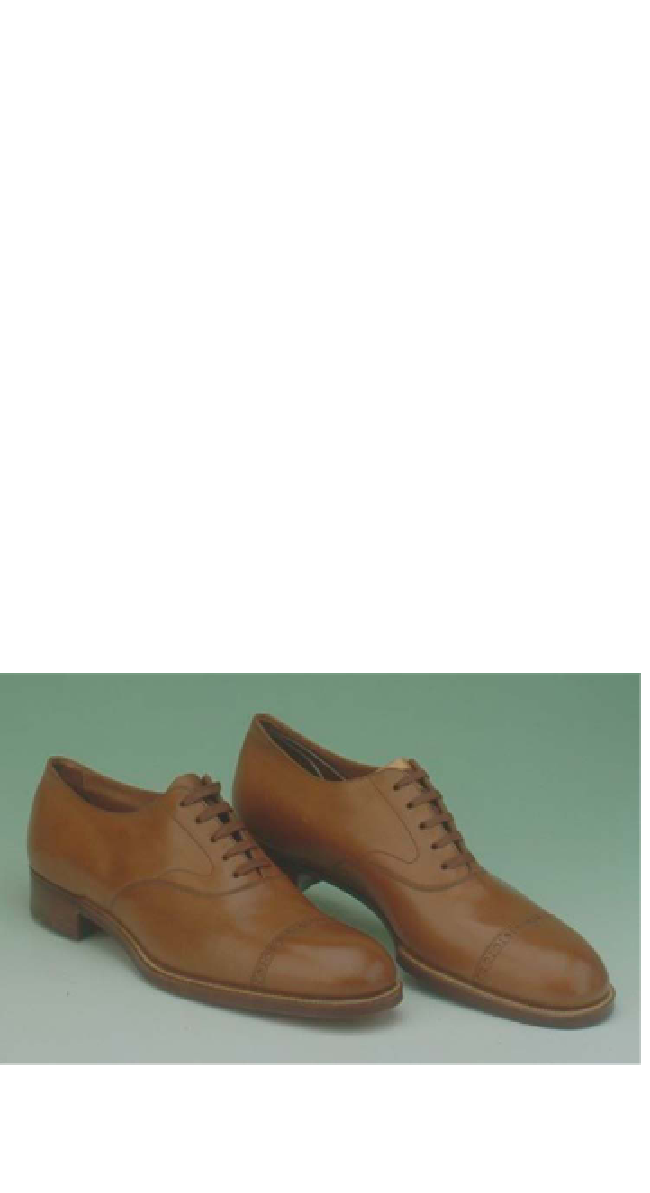what-when-how
In Depth Tutorials and Information
Other characteristics included pointed toes, ribbon and buckle latchet
ties, and high covered wooden heels.
By the end of the 1760s, thick heels began to thin down and were
therefore not very strong, the top became wider and more wedge-like,
producing in the 1770s the 'Italian Heel' for women's shoes. Towards
the end of the 18th century and the beginning of the 19th century,
women's shoes became lower in cut and heels became lower until
they disappeared altogether. The pointed toe was replaced first by narrow
oval toes and then by square toes. Shoes became dainty, made from
satin and silks to which ribbon ties were added to keep the shoe on the
foot.
19th-century footwear
The 19th century is characterized by the predominance of boots both for
men and women. Apart from boots, women wore 'court shoe' styles
in a variety of different materials, from satin and silk to reptile and
leathers. Men had a choice between the Oxford shoe (
Figure 4.3
) with
front lacing and a closed tab, and the Derby shoe, with front lacing and
an open toe.
figure 4.3
Oxford shoe

















































